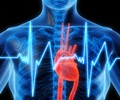A new research by the Geron cooperation scientists and collaborators show that heat repair by human embryonic stem cell( hESC)-derived cardiomyocytes show good progress. The function of the heart after myocardial infarction also shows great improvement. This landmark study by the Geron is the first to document the probable clinical usefulness of reviving damaged heart muscle by injecting hESC-derived cardiomyocytes directly into the spot of the infarct. The research would enable the cooperation to manufacture the cardiomyocytes in a scaleable production system for the ongoing research in large animals and finally to test in humans. The research is published online in Nature Biotechnology.
The study describes the feeder- and serum-free, scalable production of hESC-derived cardiomyocytes, their survival in the infarct zone of rats when transplanted four days after infarction, and echocardiographic and MRI evidence of significant improvement in cardiac structure and contractile function. Geron’s scientists conducted the study in collaboration with Charles Murry, M.D., Ph.D., and Michael Laflamme, M.D., Ph.D., at the University of Washington.“This is one of the most important publications on hESCs for Geron to date,” said Thomas B. Okarma, Ph.D., M.D., Geron’s president and chief executive officer. “Our cardiomyocytes are the first human cardiac cells shown to survive after injection into an infarcted ventricle and to produce significant improvement in heart function. hESCs are the only cell type shown definitively to form cardiomyocytes.”
Approximately 5.2 million people in the United States suffer from heart failure, and approximately 865,000 people experience myocardial infarction each year. About 36% of this population progresses to heart failure within five years of a first infarction. More than one-third of all heart failure patients die within two years of diagnosis.
“We’re developing our cardiomyocyte product, GRNCM1, to address the large unmet need in heart failure,” Dr. Okarma added. “We expect GRNCM1 to be our second hESC-derived cell type to enter clinical development.”
Production and Characterization of hESC-derived Cardiomyocytes In the study, researchers produced human cardiomyocytes from hESCs using a sequential, directed differentiation protocol that did not rely on serum or feeder cells. The procedure was scalable and efficient, with each hESC producing approximately three human cardiomyocytes. After final enrichment, greater than 80% of the cells were cardiomyocytes. The hESC-derived cardiomyocytes displayed surface and intracellular markers, as well as electrophysiologic and pharmacologic properties consistent with human cardiomyocytes, the majority of which represented ventricular cardiomyocytes. Engraftment Following Transplantation.
To enable survival in the heart, the hESC-derived cardiomyocytes were suspended in a cocktail of survival factors that had been experimentally determined to dramatically enhance cell survival after injection into the infarcted ventricular wall. Four weeks later, tissue sections from the infarcted hearts were examined for the presence of the human cells. The vast majority of human cardiomyocytes were localized in the central region of the infarct, suggesting that the cells were capable of engraftment in the hostile environment of the infarct zone. Moreover, a portion of the cardiomyocytes was mitotic after injection, possibly enhancing their regenerative efficiency. The grafts also induced a brisk, host-derived angiogenic response: all the implants contained numerous capillaries lined with rat endothelial cells.
Impact of Transplanted hESC-derived Cardiomyocytes on Cardiac Structure and Function
Four days after infarction, animals were injected with 10 million hESC-derived cardiomyocytes suspended in the survival cocktail. Animals injected with either the survival cocktail alone, serum-free media without cells, or equivalent numbers of non-cardiac hESC-derived cells suspended in the survival cocktail served as control groups.
Echocardiography performed four weeks after cell implantation showed attenuation of left-ventricular end-diastolic and end-systolic diameters in animals receiving cardiomyocytes versus all three control groups. In addition, fractional shortening was significantly improved (0.01) in animals that received cardiomyocytes compared to all three control groups. MRI analysis showed improved left-ventricular ejection fraction (p=0.05) in the cardiomyocyte-treated rats compared to controls, as well as a 2.5-fold increase in systolic wall thickening in the infarct zone relative to controls (0.01).
Significance This study is the first to document the potential clinical utility of regenerating damaged heart muscle by injecting hESC-derived cardiomyocytes directly into the infarct zone of the heart. The survival cocktail administered with the cells enables their long-term survival in the infarcted muscle. The injected cells stimulate endogenous blood vessel formation, possibly contributing to both cell survival and improved contractile function. The scalable production system allows for production runs at sufficient scale for large animal studies (ongoing) as well as for ultimate testing in humans.
Source-Eurekalert
BIN/C











